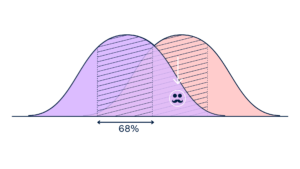Beyond Trends: Embracing Scenarios and Weak Signals for Future Analysis
In today’s rapidly evolving world, anticipating the futures has become essential for individuals and organizations. However, relying solely on trends to predict what lies ahead can create a false sense of comfort. This post explores the limitations of trends and highlights the importance of scenarios and weak signals in analyses of the futures.
Trends vs. Scenarios
Trends are based on observations of the present, and they project these observations into the future. Although they can provide valuable insights into current patterns, they have their limitations. Trends assume that the future will unfold in a linear fashion, disregarding potential disruptions or paradigm shifts that may occur.
Whereas, scenarios offer a different approach to understanding the futures. Rather than assuming a single path forward, scenarios allow you to explore the alternative possibilities ahead. They encourage us to think beyond the status quo and consider a multiplicity of potential outcomes. And then, by examining several scenarios, you can better prepare for whatever lies ahead in this VUCA world.
The Power of Weak Signals
Within the realm of scenarios, identifying weak signals is crucial. Weak signals are subtle indications of change that may initially fall outside the mainstream or be dismissed as improbable events. However, paying attention to these weak signals can reveal emerging trends or significant shifts in the world.
Weak signals often lie on the fringes of the bell-curve, outside the expected range of outcomes, such as in the illustration below. Yet, they possess the potential to become the new norm or trigger transformative changes. By recognizing and analyzing weak signals, we can gain valuable insights into emerging trends, disruptive technologies, or societal shifts that may reshape the future.

Embracing Possibilities
By moving beyond trends and embracing scenarios and weak signals, we open ourselves up to a world of possibilities. Instead of relying solely on a narrow vision of the future, we expand our thinking and challenge our assumptions. This mindset shift enables us to envision multiple futures, prepare for uncertainties, and navigate complex landscapes.
Remember, exploring scenarios and identifying weak signals fosters a proactive approach to shaping the future. Rather than being passive recipients of change, we become active participants, shaping our destinies, and influencing the course of events. By embracing a diverse range of futures, we empower ourselves to make informed decisions and adapt to changing circumstances effectively.
Conclusion
In order to become futures-ready, it is crucial to go beyond the limitations of trends. While trends provide valuable insights into the present, they fail to capture the complexity and uncertainties of the futures. Instead, by leveraging scenarios and paying attention to weak signals, we can gain a deeper understanding of the possibilities that lie ahead.
Let’s challenge ourselves to explore alternative futures and identify those subtle weak signals that may shape our world. That way, we can actively build better futures together, and make history by doing so!






